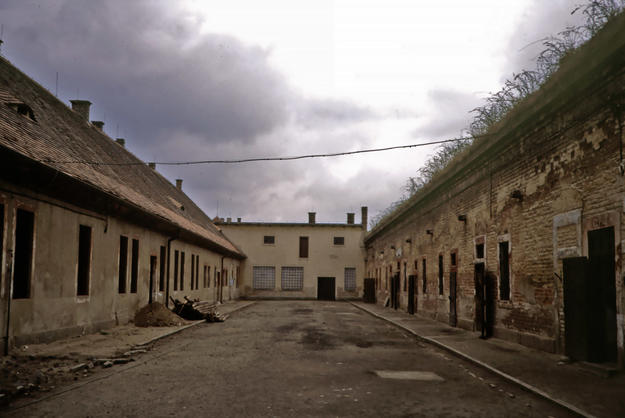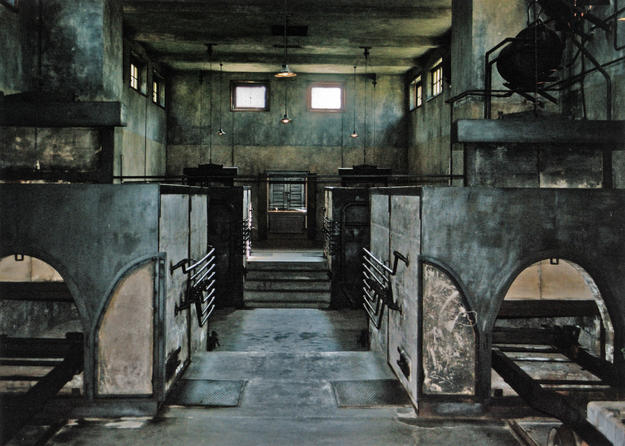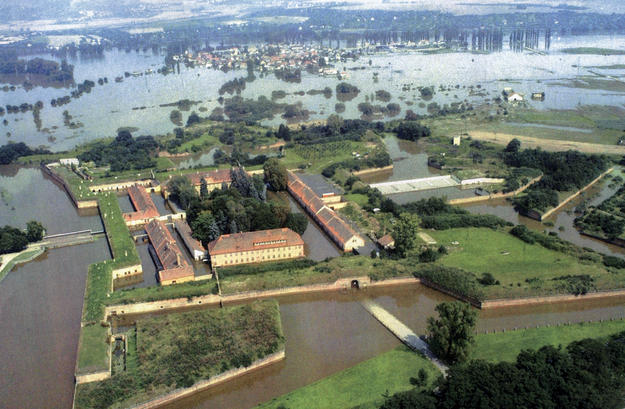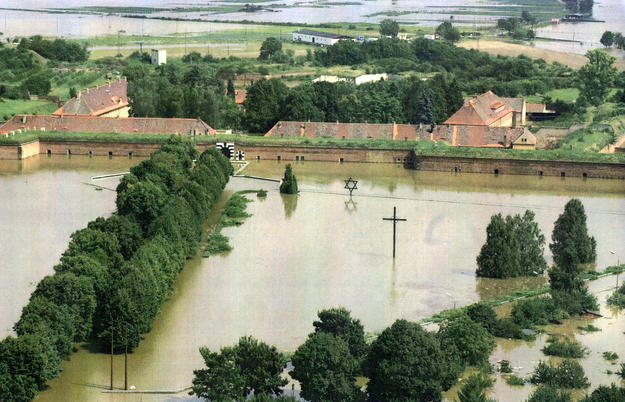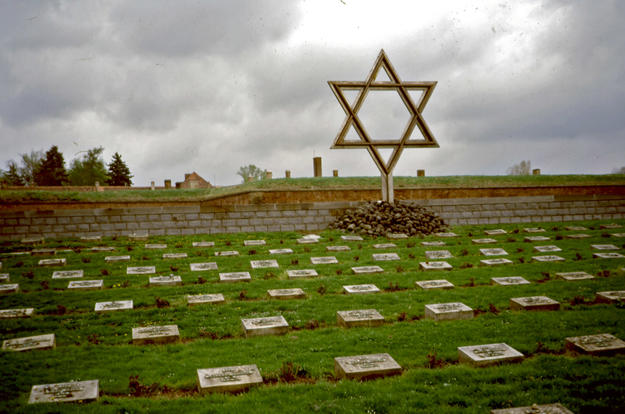Terezin Fortress
Terezin Fortress, a vast military complex with a perimeter of over 12 miles (20 kilometers), guards the confluence of the Elbe and Eger rivers in the northwest Czech Republic. Terezin was constructed between 1780 and 1790 at the order of Hapsburg Emperor Joseph II. General Karl Clemens Pellegrini designed the baroque fortress town and surrounded it with bastion-type fortifications. Terezin has three major sections: the main fortress, a smaller fortress, and the brick entrenchments on either side. Named for Empress Maria Teresa, it watched over the route between Prague and Dresden. In the mid-20th century, Terezin was given a new, ugly role in wartime affairs, when it was used as a Jewish ghetto and deportation base by the Nazis. During the past few decades, small-scale efforts have been made to conserve the site: the façade of the small fortress was partially repaired, as was the fortress church. However, a disastrous flood in August 2002 destabilized much of the structure and introduced water damage and biodegradation to Terezin’s list of threats.
2002 World Monuments Watch
Terezin Fortress appeared on the 2002 Watch. WMF partnered with the Czech Republic’s National Institute for the Care of Historical Monuments to develop and enact a conservation plan for two areas within the complex: the small fortress and the 20th-century crematorium. During the flood in 2002, the crematorium was under water for five days and its walls emerged covered in mosses and lichen. WMF financed the preservation of the building. Workers removed both the biological growth deposited by the flood and also a layer of paint applied in an earlier, misguided conservation attempt. A five-year inspection cycle was established in order to monitor the stability of the structure and the humidity level inside the rooms. In conjunction with the Czech Academy of Sciences, a survey of structural problems was taken of the entire Terezin complex. A long-term conservation plan was conceived, which includes further repairs, documentation, and archaeological research.
Terezin Fortress has two independent histories that both require the site to be preserved. As an architectural monument, it is a model fortified town, with 90 percent of the original fabric intact. Its massive, perfected bastion system is the product of three centuries of practice by various European architectural schools. Terezin, used as a ghetto and equipped with a crematorium, also bears witness to the atrocities of the Holocaust. Between 1941 and 1945, 190,000 Jews passed through Terezin on their way to concentration camps in Central Europe. Another 35,000 died from overcrowding and disease within the fortress itself. The fortress still stands as a testament to the deaths of thousands and is one of the most visited memorial sites in Central Europe today.

